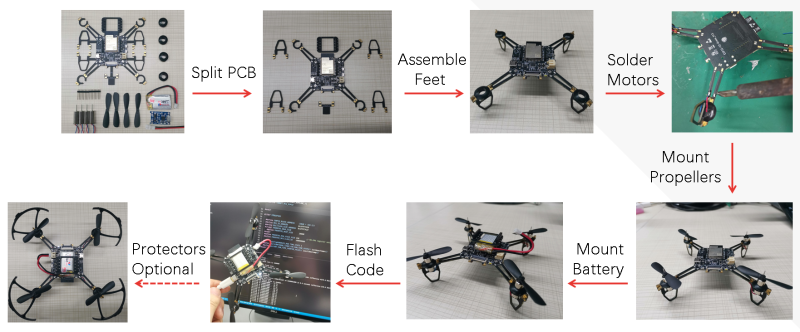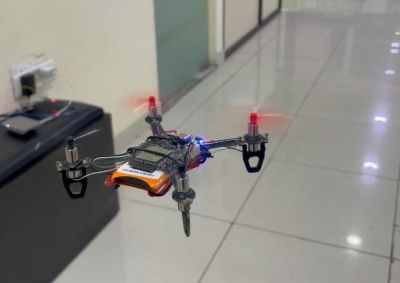

What’s the cheapest quadcopter you can build? As [Circuit Digest] demonstrates with their variant of the ESP-Drone project by Espressif, you only need a minimum of parts, with at the core an ESP32 MCU module, inertial measurement unit (IMU, e.g. the MPU6050) and four MOSFETs to drive the brushless DC motors. As the PCB also forms the structural frame and landing struts for the quadcopter, not even a 3D printer is needed, with [Circuit Digest] coming to a total BOM cost coming to around 1,000 Indian Rupees, or about $12 USD.
While this [Circuit Digest] project gets you the basic done with IMU functionality, the Espressif project also has a few expansion boards detailed on its hardware page, depending on the base model of the mainboard you pick. The [Circuit Digest] project follows the ESPlane-V2-S2 version with no expansion boards, but the ESP32-S2-Drone V1.2 mainboard can be extended with position-hold, pressure and compass modules, as well as custom boards. As a derivative of the Bitcraze Crazyflie project, the ESP-Drone firmware also supports the rather nifty cfclient software for remote monitoring, logging and control. This may also be in the [Circuit Digest] firmware, but wasn’t listed among the features.
A nice feature of using cfclient is that you can use a standard (game) controller to control the quadcopter, while also getting a lot of flight data back. The other option is to use the Android or iOS app from Espressif (with source code available via their GitHub) and control the drone that way. Regardless of the method, you’ll be limited to the limits of the local WiFi network in terms of range, which probably resolves the issue of it not having a camera feed to steer from. This makes it arguably more of an (indoor) toy than a DJI competitor, but as a DIY quadcopter project it definitely is a lot of fun, while costing a lot less than most hobbies.
